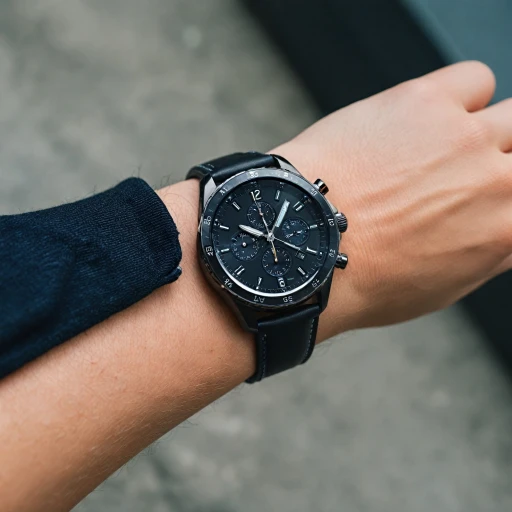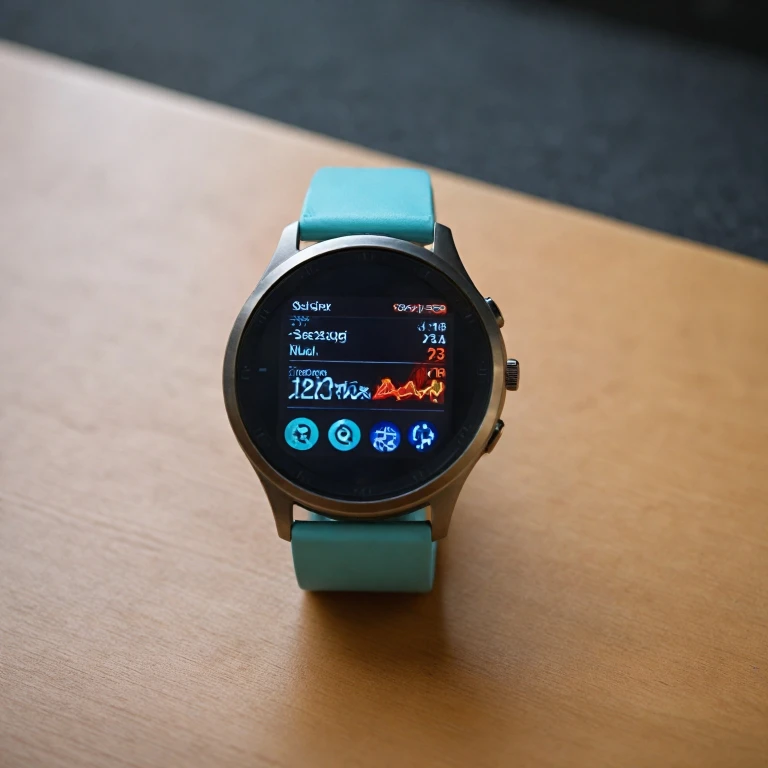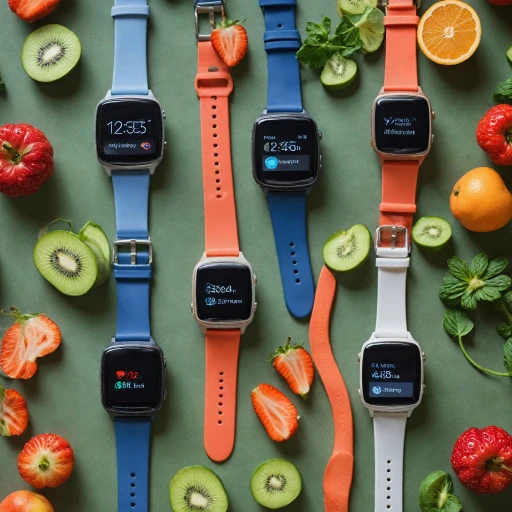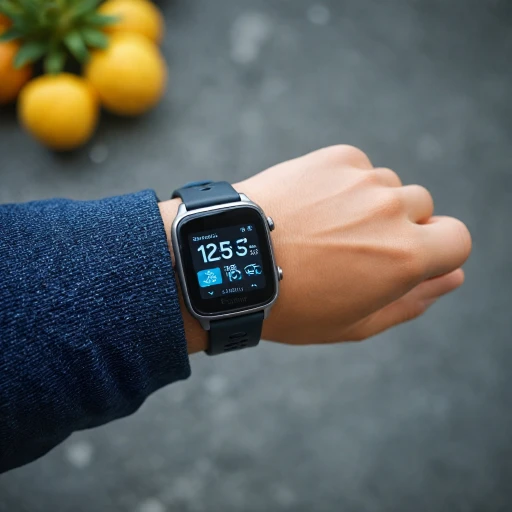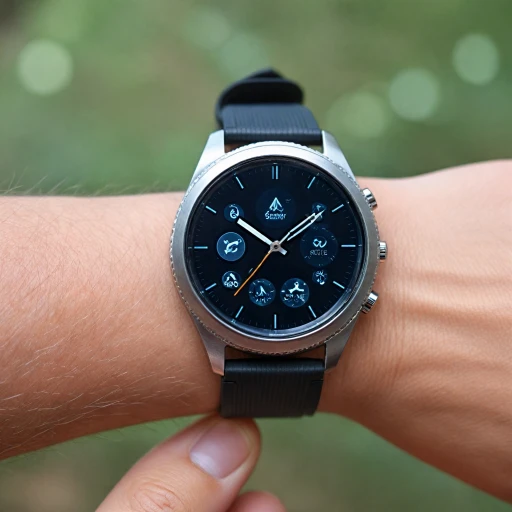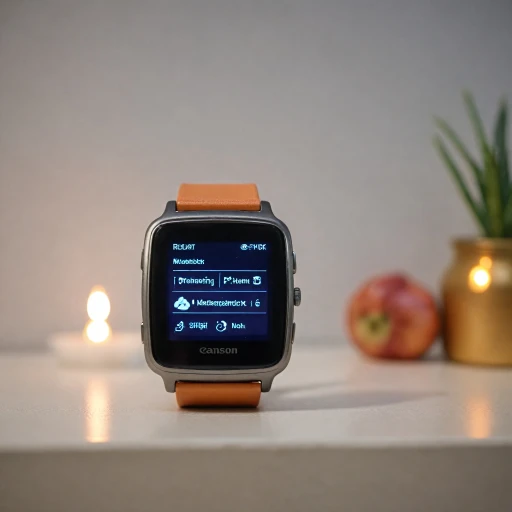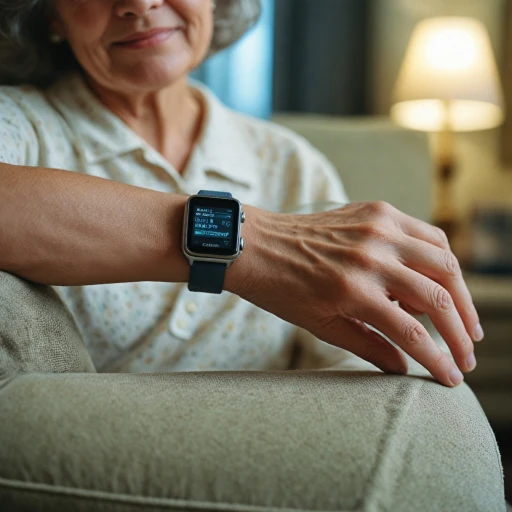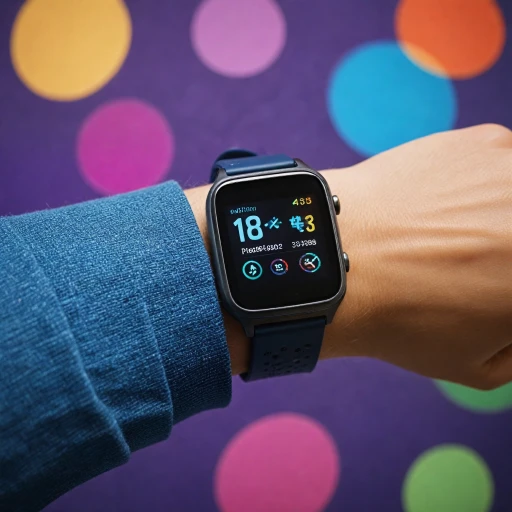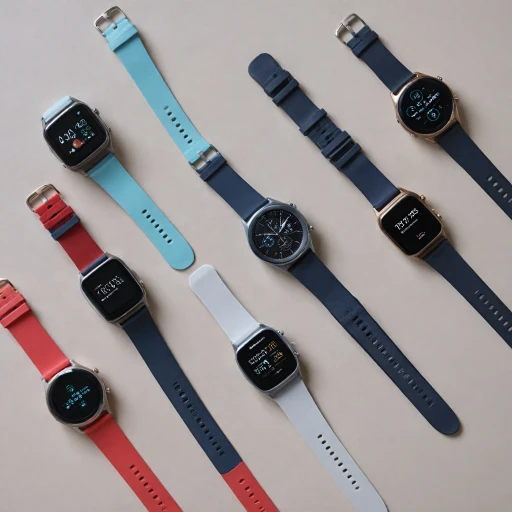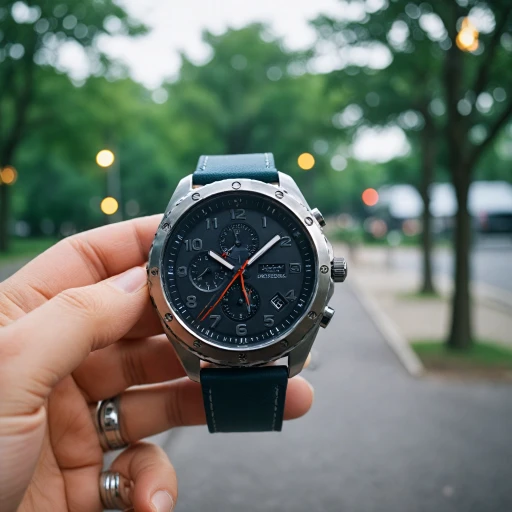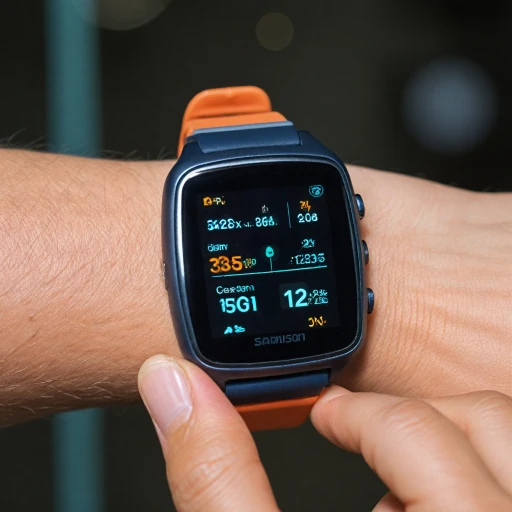Understanding Blood Pressure Monitoring in Smartwatches
Why Monitor Blood Pressure with a Smartwatch?
With the rise of wearable technology, smartwatches have become a staple in many fitness enthusiasts' arsenals, evolving beyond merely telling time to offer a range of health-monitoring features. One of the most sought-after functionalities in smartwatches today is blood pressure monitoring. As high blood pressure remains a critical health concern globally, keeping track of blood pressure through a smart watch offers convenience and real-time insights, potentially transforming how individuals manage their health.
The Technology Behind Blood Pressure Monitoring
Blood pressure watches leverage advanced sensors and algorithms to provide pressure readings, allowing users to monitor their blood pressure without the need for traditional cuffs. While some devices may require periodic calibration against standard pressure monitors for accuracy, the ability to obtain on-demand readings is a compelling feature. Yet, not all smartwatches are created equal in this respect. Understanding the technology behind these devices can help consumers choose a pressure watch that suits their needs and budget, ensuring they invest in the best blood pressure monitoring option available.
From Heart Rate to Blood Pressure: The Spectrum of Health Monitoring
A modern blood pressure smart watch provides more than just pressure monitoring. It often includes heart rate tracking, blood oxygen levels, and even fitness metrics. Devices such as the Galaxy Watch and the Apple Watch offer comprehensive health tracking features, making them popular choices. The integration of various health metrics through one app offers a holistic view of one's health, although consulting with a doctor remains essential for interpreting these readings and managing health conditions effectively.
In summary, understanding the basics of the technology behind blood pressure monitoring in smartwatches is the first step in choosing the right device. As you continue exploring options, consider how these readings integrate with health management apps and other smartwatch features, enhancing your overall fitness and health regime.
Top Features to Look for in a Blood Pressure Smartwatch
Key Factors to Consider for Optimal Blood Pressure Monitoring
When searching for the best blood pressure monitoring capabilities in a smartwatch, several important features and considerations come into play to ensure you make an informed decision. Here’s a breakdown of what to look for:
- Accuracy of Measurements: Precision in blood pressure readings is paramount. Look for watches that offer clinically validated accuracy. The right device should match the reliability you get from a traditional blood pressure cuff.
- Integrated Health Sensors: Many smartwatches combine multiple health metrics, including heart rate, blood oxygen, and blood pressure. A smart watch equipped with comprehensive health sensors will provide a holistic view of your cardiovascular health.
- Battery Life: A device with a longer battery life ensures you can monitor your health throughout the day without frequent recharges. Consider watches that balance battery efficiency with continuous heart rate and blood pressure monitoring.
- Compatibility with Health Apps: Seamless integration with fitness and health apps enhances the efficacy of your monitor device. This enables you to track trends over time, share data with your doctor, and receive insights on your heart health and any detected high blood pressure.
- Comfort and Design: Since blood pressure monitors need to be worn regularly, the design and comfort of the blood pressure watch matter. Ensure it is lightweight and fits well on your wrist without being cumbersome.
- Price Consideration: While premium models like the Samsung Galaxy Watch and Apple Watch boast advanced features and high accuracy, there are other devices available at a more accessible sale price. Evaluate the price against the features to find a model that suits your needs.
- User Reviews and Testimonials: Other users’ experiences can be telling. Analyze testimonials and expert reviews to gauge real-world performance and reliability.
For those seeking smartwatches that cater specifically to older adults, consider exploring more options in this comprehensive guide.
Comparing Leading Smartwatches for Blood Pressure Monitoring
Evaluating Prominent Pressure Wearable Devices
When embarking on the journey of selecting a blood pressure monitoring smartwatch, understanding the nuances of leading options is essential. Two of the most lauded choices in the market are the Apple Watch and the Samsung Galaxy Watch. Each device presents its own unique set of features aimed at offering precise pressure readings and overall health monitoring.
The Apple Watch excels in its integration with the health app ecosystem. Known for its reliable heart rate and cardiovascular health monitoring, Apple continues to innovate in the smartwatch sizing and functionality domains.
In comparison, the Samsung Galaxy Watch distinguishes itself with its comprehensive fitness tracker capabilities and exemplary battery life. It also stands out with its blood oxygen measurement and compatibility with various health platforms, making it a formidable choice for those who prioritize all-around health monitoring.
Both watches incorporate pressure monitoring functions, with Apple leading slightly in high blood pressure detection alerts. However, Samsung offers users a more wallet-friendly sale price, making it appealing to budget-conscious buyers.
Other noteworthy mentions include devices with cuff-less technology for continuous pressure measurements, offering innovative ways to “measure blood pressure” without interrupting daily activities. As medical professionals often favor accurate readings, consulting with your doctor remains prudent when choosing such devices, ensuring they meet your health monitoring needs adequately.
Integrating Smartwatch Data with Health Apps
Health App Compatibility and Data Integration
Smartwatches have become crucial health tracking devices, consistently evolving to offer users more detailed insights into their well-being. The ability to integrate smartwatch data with various health apps significantly enhances the device’s utility in blood pressure monitoring. This section delves into how synchronization works and what benefits users can expect from this feature.
Seamless integration with health apps allows smartwatches to extend their monitoring capabilities beyond displaying on-screen data. By connecting your smartwatch to a compatible health app, you gain access to personalized health analysis, which assists in identifying patterns in your blood pressure readings and other vital metrics like heart rate and blood oxygen levels.
A well-designed app complements a smartwatch, offering alerts on irregular readings and even integrating other metrics such as heart rate and fitness tracking to provide a comprehensive view of your health journey. Well-known apps, often compatible across multiple watch brands, facilitate easy monitoring in collaboration with your doctor, bringing a more accurate picture of your cardiovascular condition.
For those considering the Samsung Galaxy Watch series or the Apple Watch, these devices often synchronize effortlessly with proprietary apps that enhance their built-in pressure watch functions. Whether grilling down to best blood pressure monitor practices or syncing with non-proprietary apps through platforms like Google Fit, users can enjoy robust tracking and enhanced detail in managing their health.
Ultimately, this integration helps users track long-term trends and better understand their blood pressure fluctuations influenced by activities, time of day, or even stress levels. It’s essential to evaluate how well a smart watch harmonizes with existing health platforms and offers data accuracy when considering a device for blood pressure monitoring.
User Experiences and Testimonials
Real-Life Impressions: Navigating Daily Use
The experience of using a smartwatch for blood pressure monitoring can greatly differ among users based on lifestyle, fitness goals, and personal preferences. Those who have incorporated blood pressure monitoring into their daily routine often highlight a few crucial aspects of these smart watches that either meet or fall short of their expectations.
For many users, the accuracy of pressure readings is a primary concern. While smartwatches are improving in this area, some still caution that a traditional cuff may be necessary for those requiring precise measurements, especially for users with health conditions requiring consistent monitoring. The combination of heart rate and blood pressure readings provides a fuller picture of one's health, yet the devices are supplementary and cannot replace a doctor's assessment.
When it comes to practicality, battery life frequently stands out. Users appreciate devices that can function for days without recharging, which adds convenience for those who track fitness metrics or sleep patterns. The ability to sync with health apps and monitor one's fitness and blood pressure over time has been highlighted as a valuable feature. Some users find the integration seamless and insightful, while others report occasional issues with app compatibility or data transfers.
Cost is another significant factor influencing user satisfaction. Many consumers are on the lookout for the best blood pressure smartwatches at a reasonable price. Watches like the Samsung Galaxy and Apple Watch are often mentioned favorably for their comprehensive capabilities, although they come at a premium. Nevertheless, when users find devices that align with their pressure monitoring and lifestyle needs, the investment is often deemed worth the price.
Moreover, individuals who value discreet health monitoring during workouts appreciate the added fitness tracking features in these devices. While there are variations in how different watches track blood oxygen and heart rate beyond just blood pressure, these multifunctional tools offer an all-in-one solution for health-conscious users.
Ultimately, testimonials reveal that finding the right balance between precision, battery life, and price, alongside the integration of smartwatch data with fitness apps, significantly shapes user satisfaction. For those requiring high blood pressure monitoring, the prospect of future smart watch advancements continues to win anticipation.
Future Trends in Smartwatch Health Monitoring
Anticipating Tomorrow’s Smartwatch Innovations
The future of smartwatches, particularly those focused on health monitoring, is filled with promising advancements. As technology continues to evolve, so too does the capability of these devices to deliver precise and comprehensive health insights.
The integration of advanced sensors in smartwatches is expected to provide even more accurate blood pressure measurements, rivaling traditional equipment like cuffs. This could further establish wearables as an essential go-to for those requiring regular pressure monitoring. With big brands such as the Apple Watch and Samsung Galaxy leading the charge, we might soon witness smartwatches exerting greater authority in health monitoring, very close to professional standards.
Moreover, the convergence of blood pressure monitoring with real-time tracking of other vital health metrics, such as heart rate, blood oxygen levels, and possibly even glucose levels, will enhance the holistic nature of health management through wearables. The device's data will effectively support users in making informed lifestyle changes, tailored fitness regimens, and even timely visits to the doctor.
Battery life, a common concern among users needing constant monitoring, is also expected to improve, offering more prolonged use between charges and ultimately elevating the user experience. For those looking for fitness trackers and health monitors, this aligns with the need for durability and reliability.
Perhaps most exciting is the potential for seamless integration with health apps and broader health ecosystems. Combining smartwatch data with evolving app features will deliver insights that are not only about catching high blood pressure early but also about improving overall well-being. As these integrations deepen, users can expect enhanced interfaces that offer personalized content and recommendations which improve both the individual setting of goals and achieving them.
As smartwatch technology advances, consumers will likely benefit from a wider array of choices at various price points, making best blood pressure and heart rate tracking more accessible. All these advancements may be available in the smartwatches of tomorrow, ensuring they remain not just a luxury but a crucial part of daily health monitoring.
